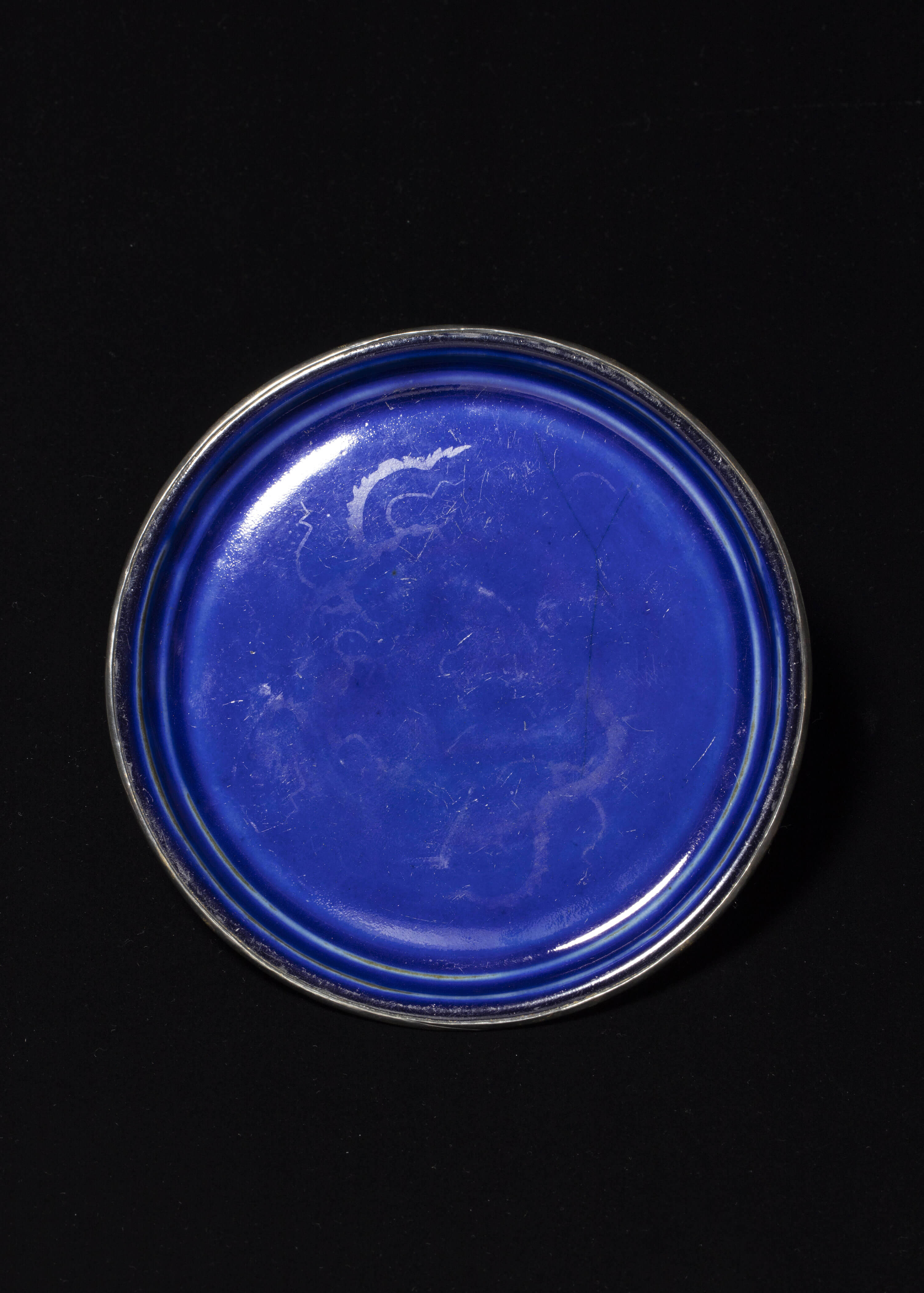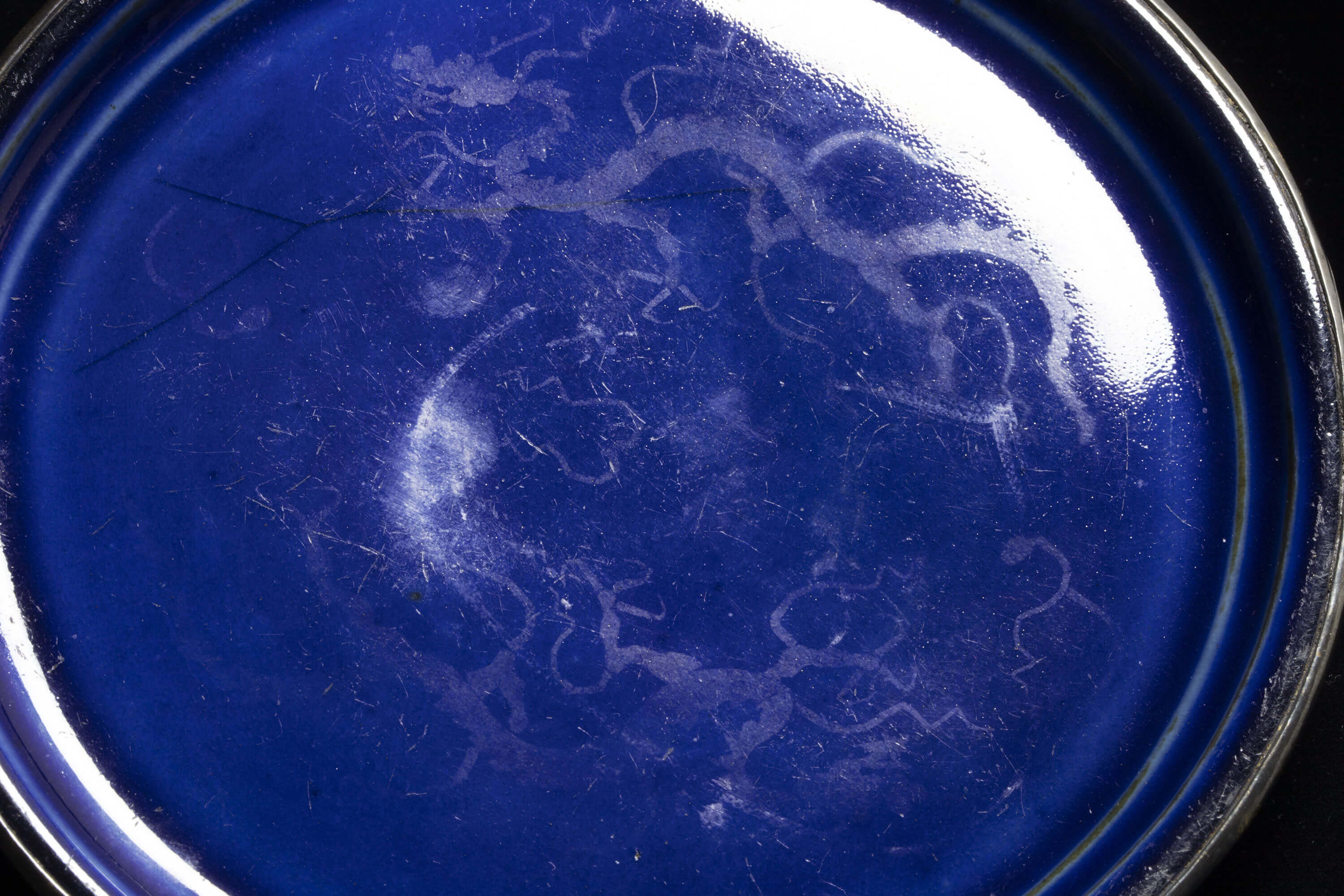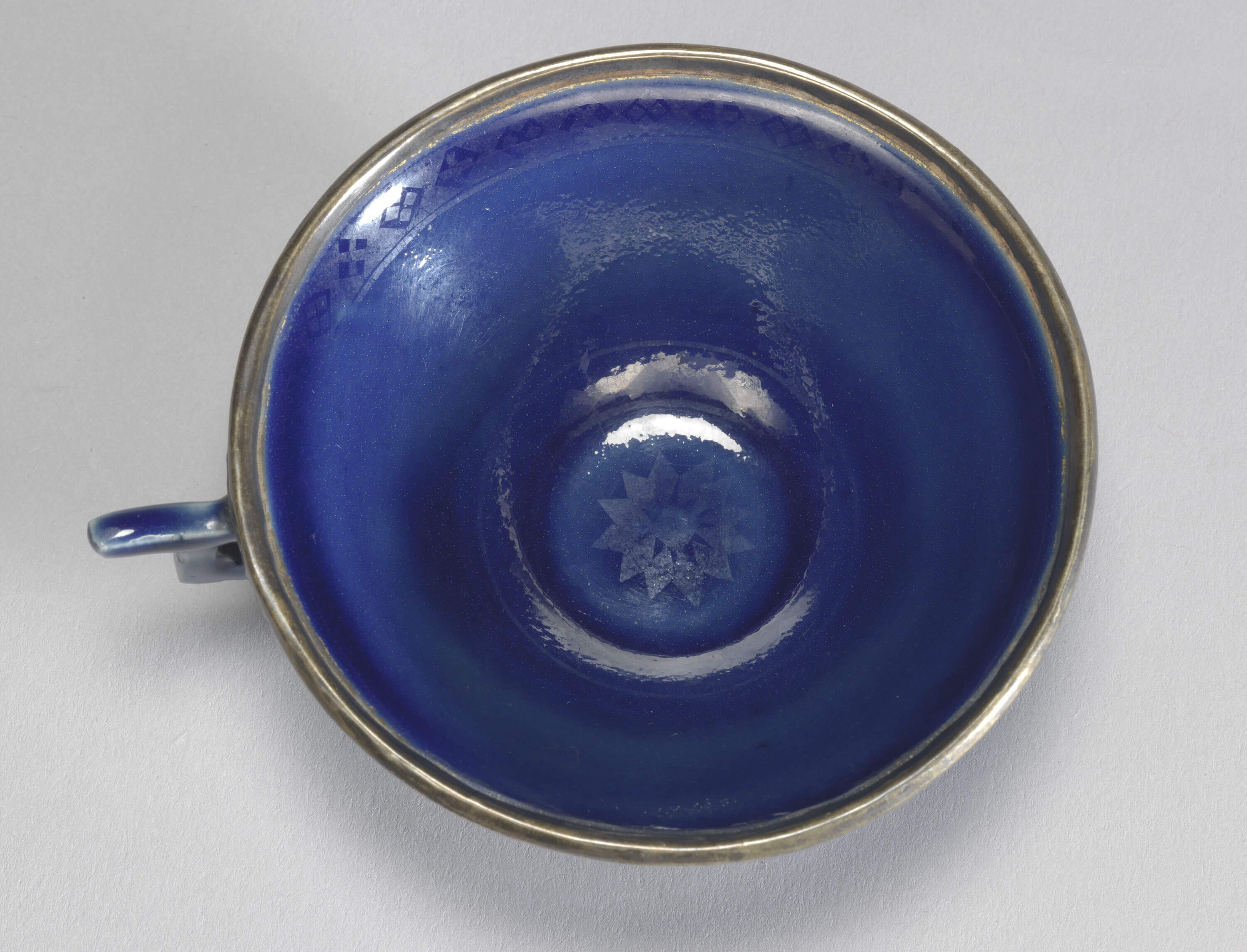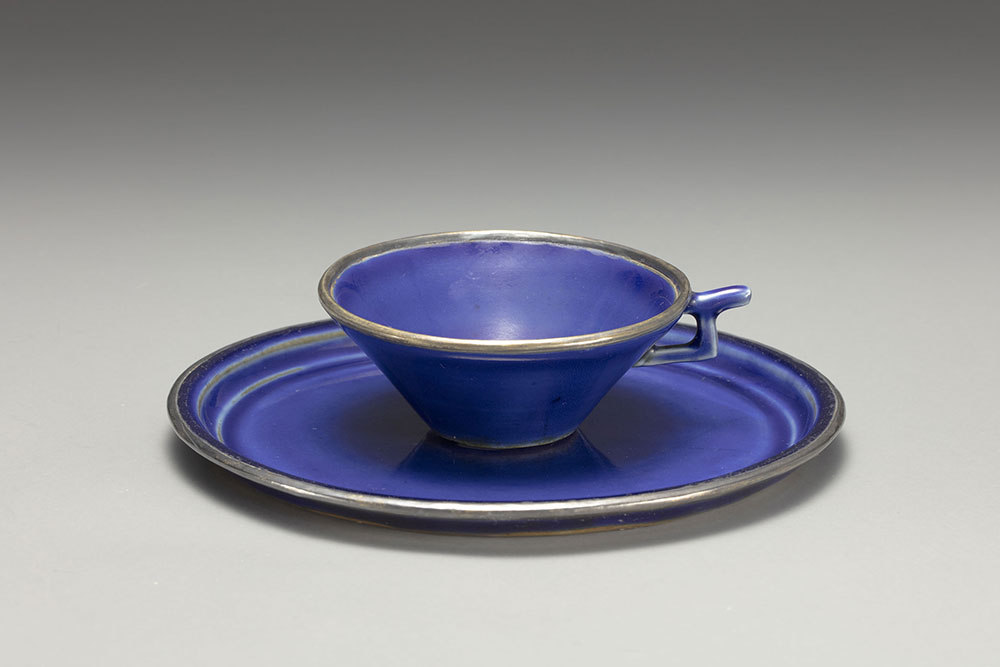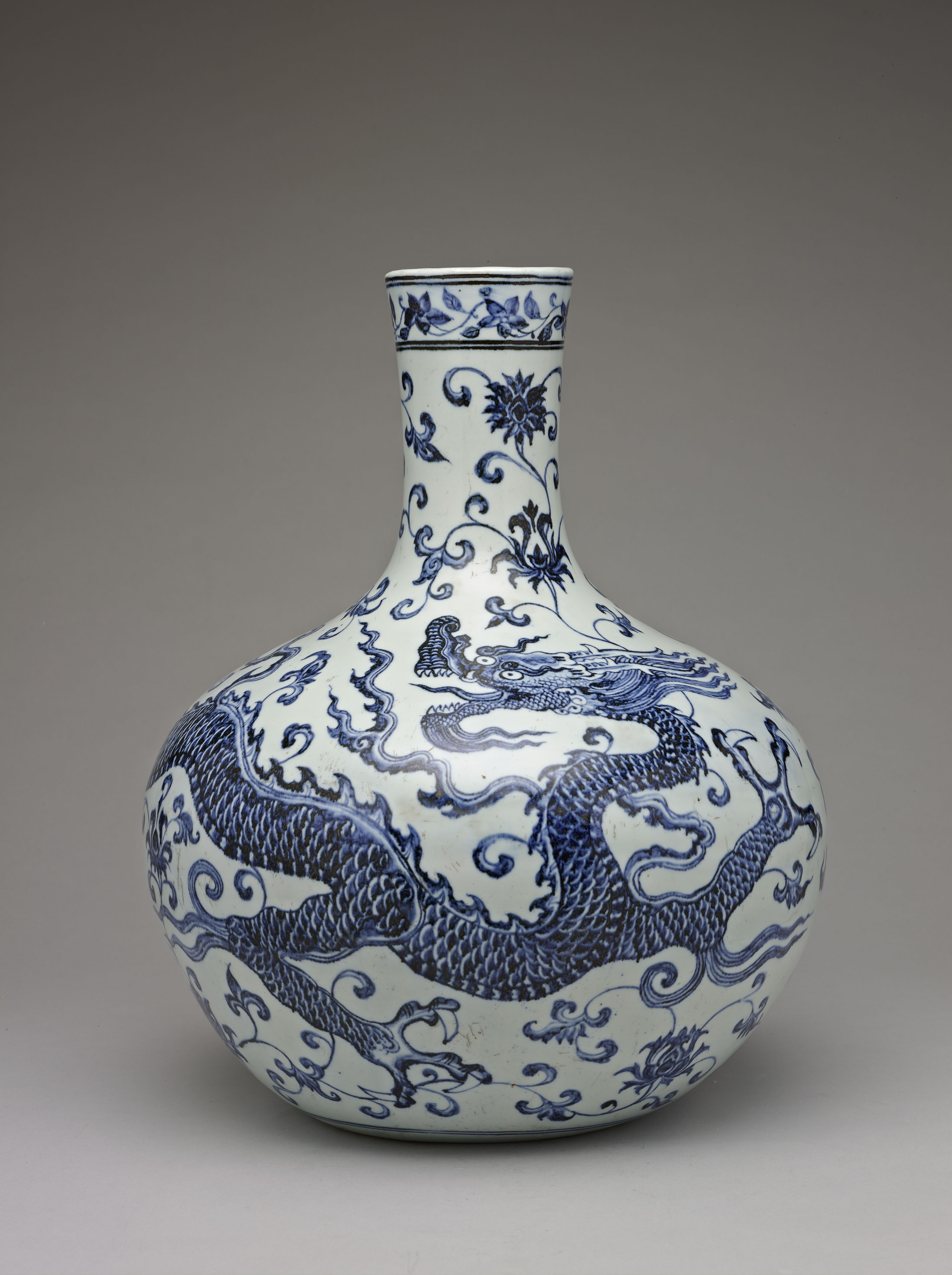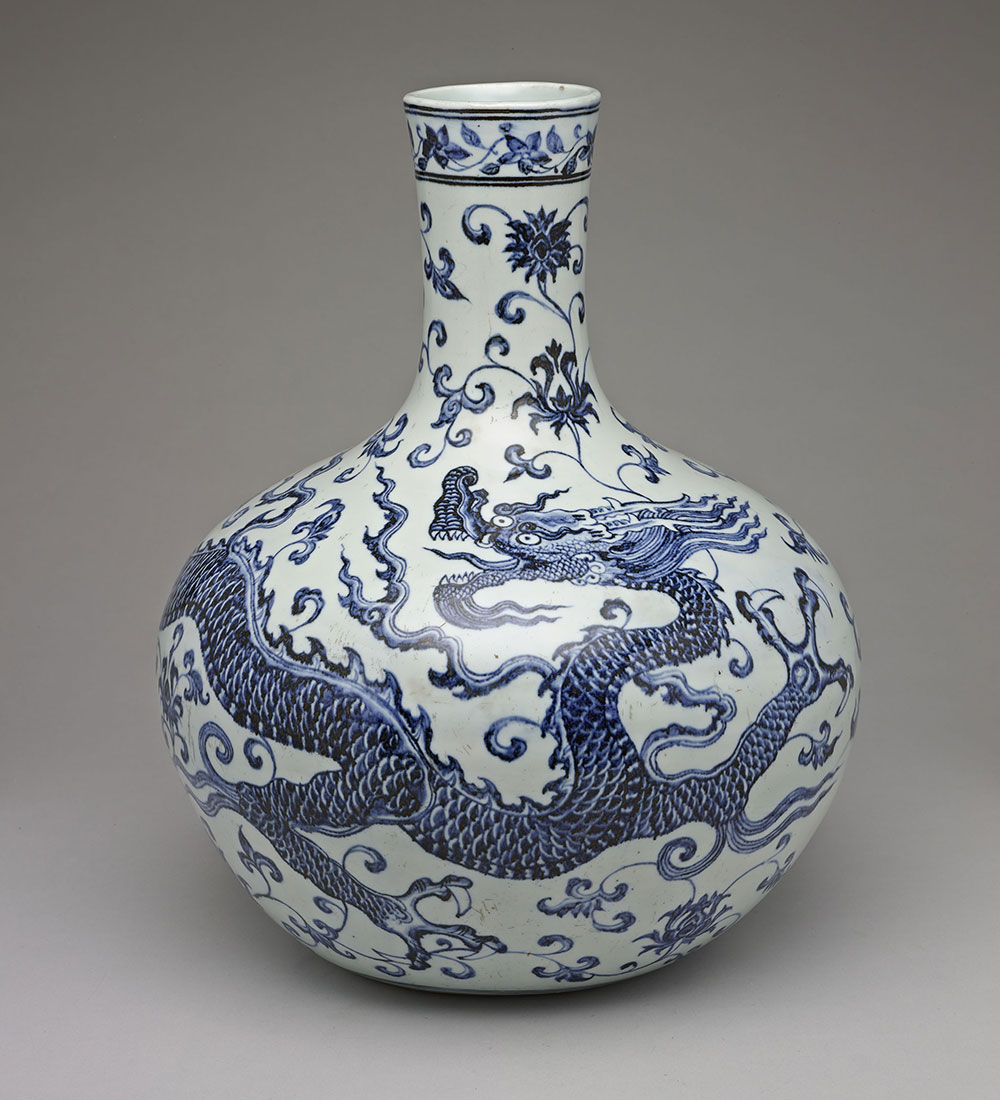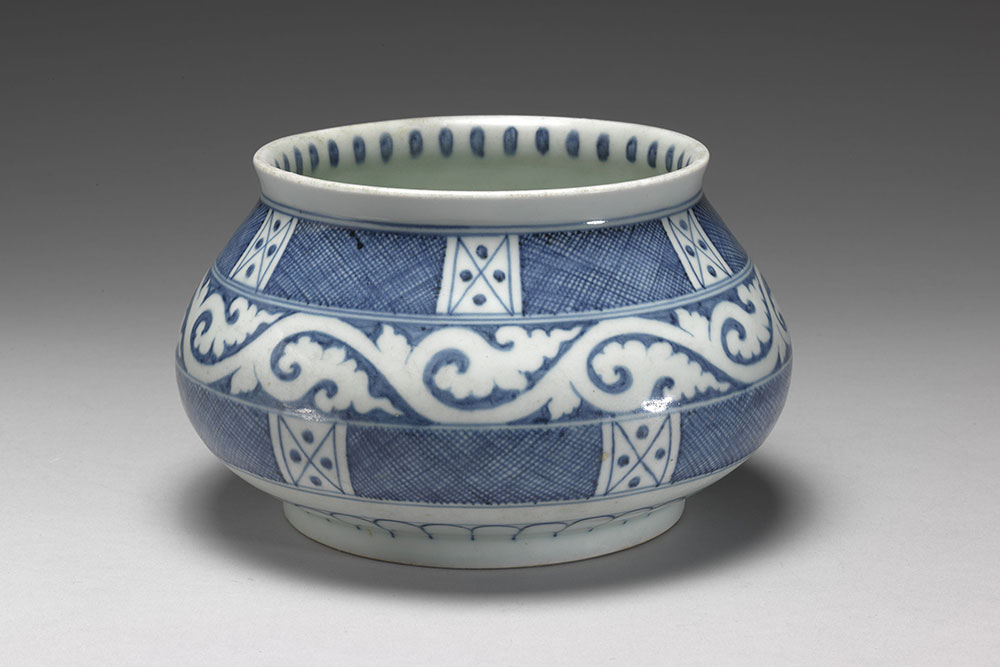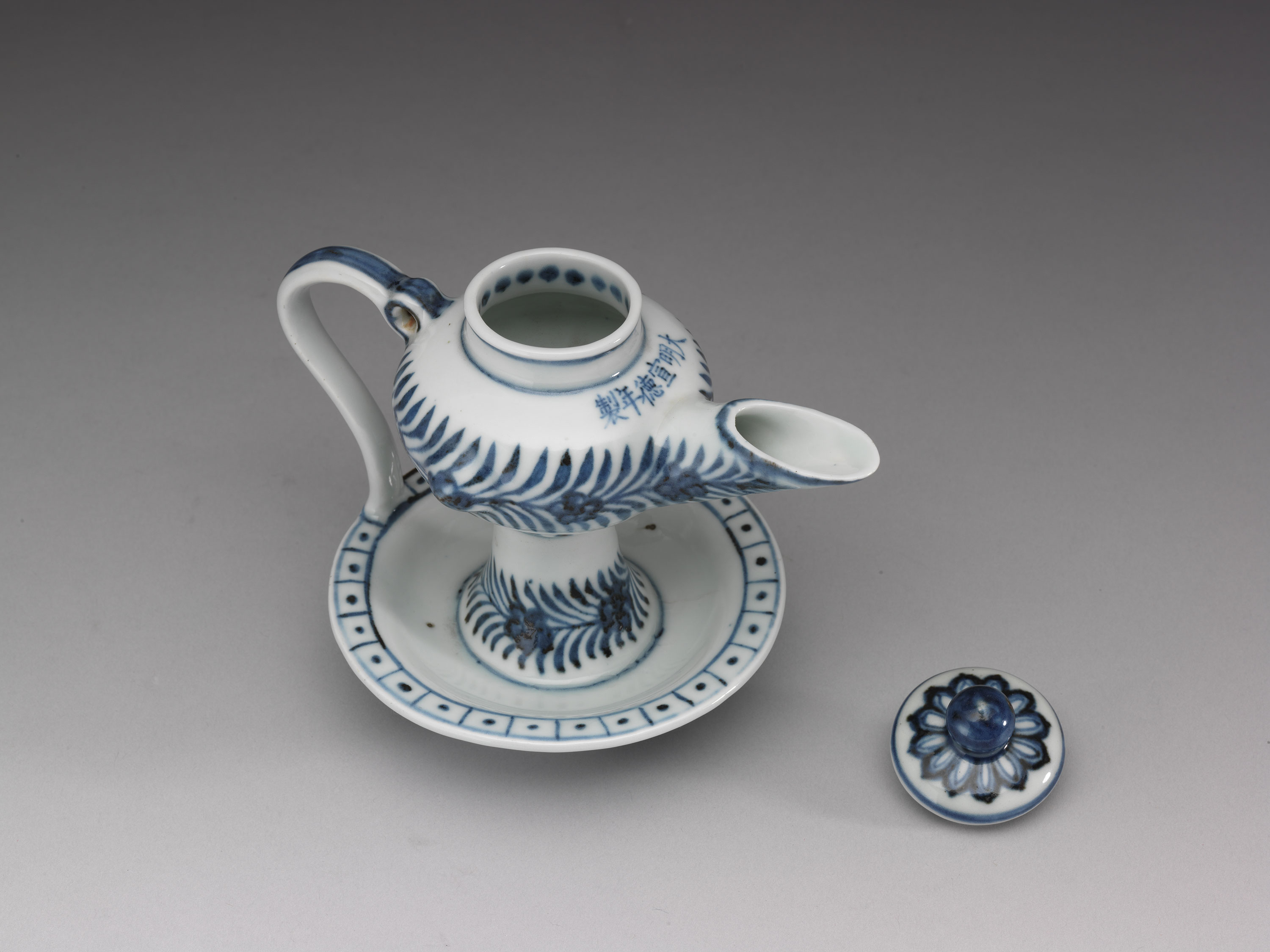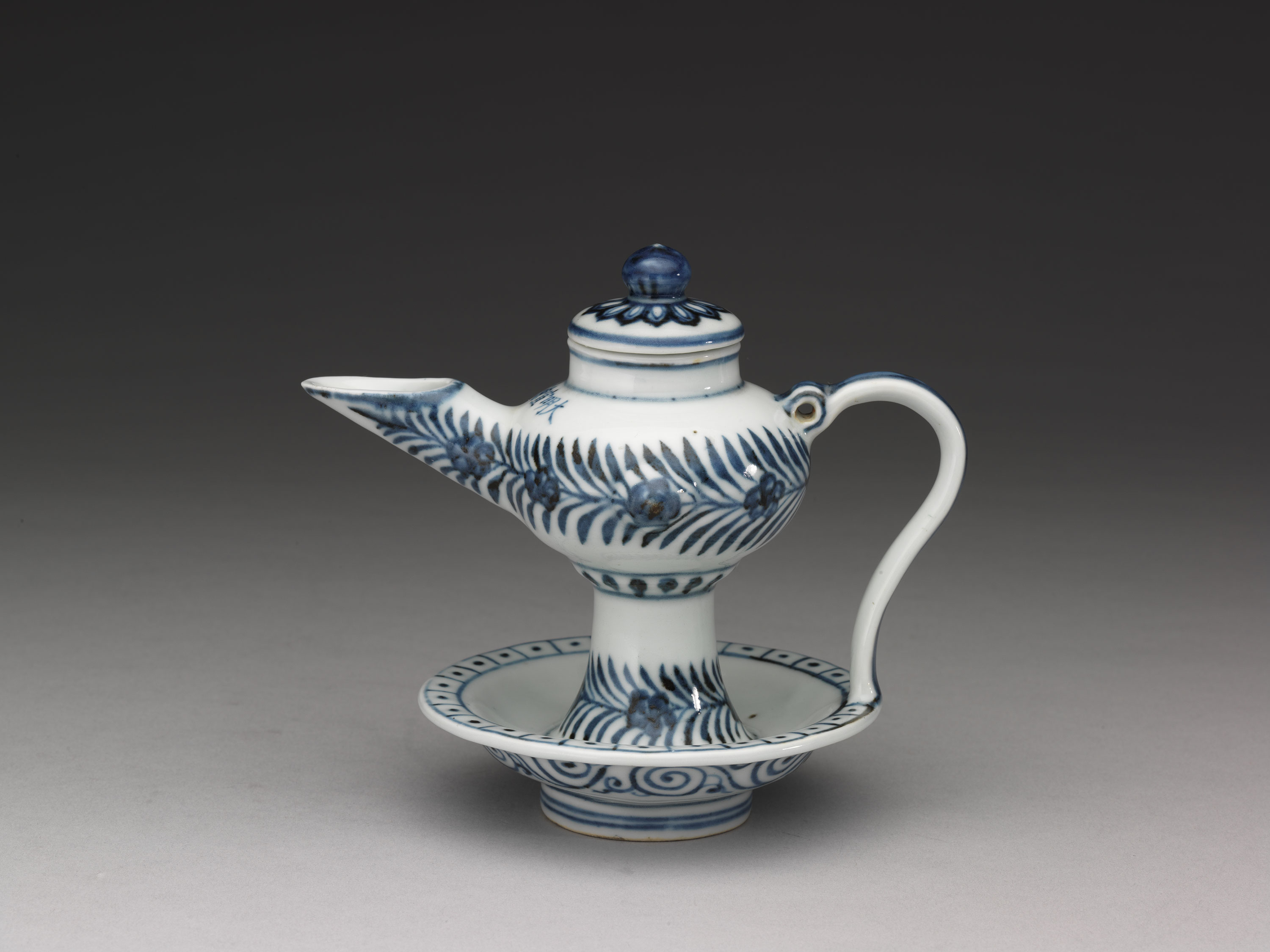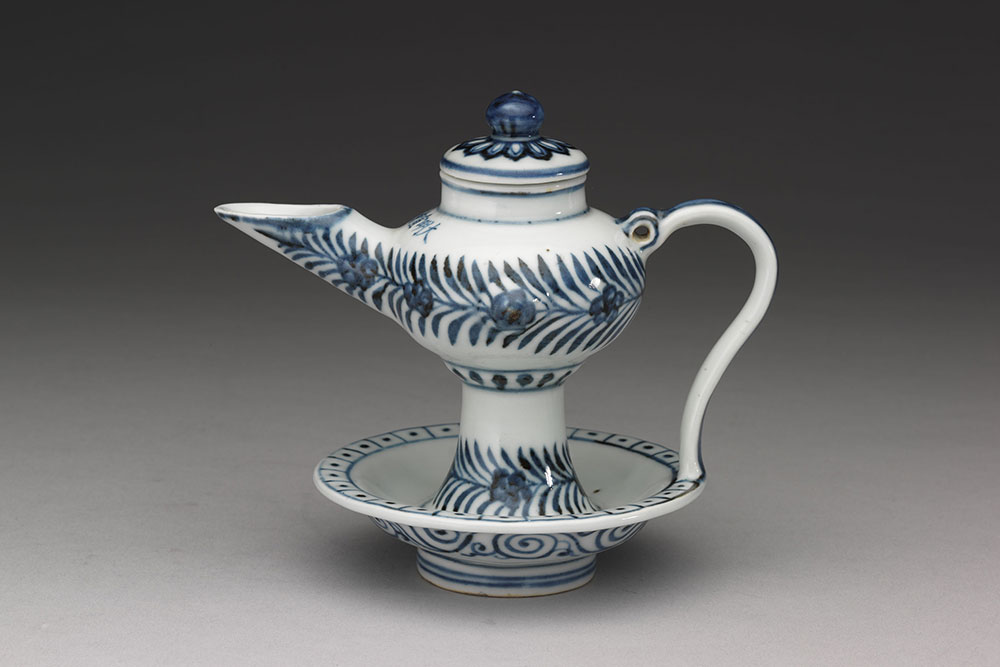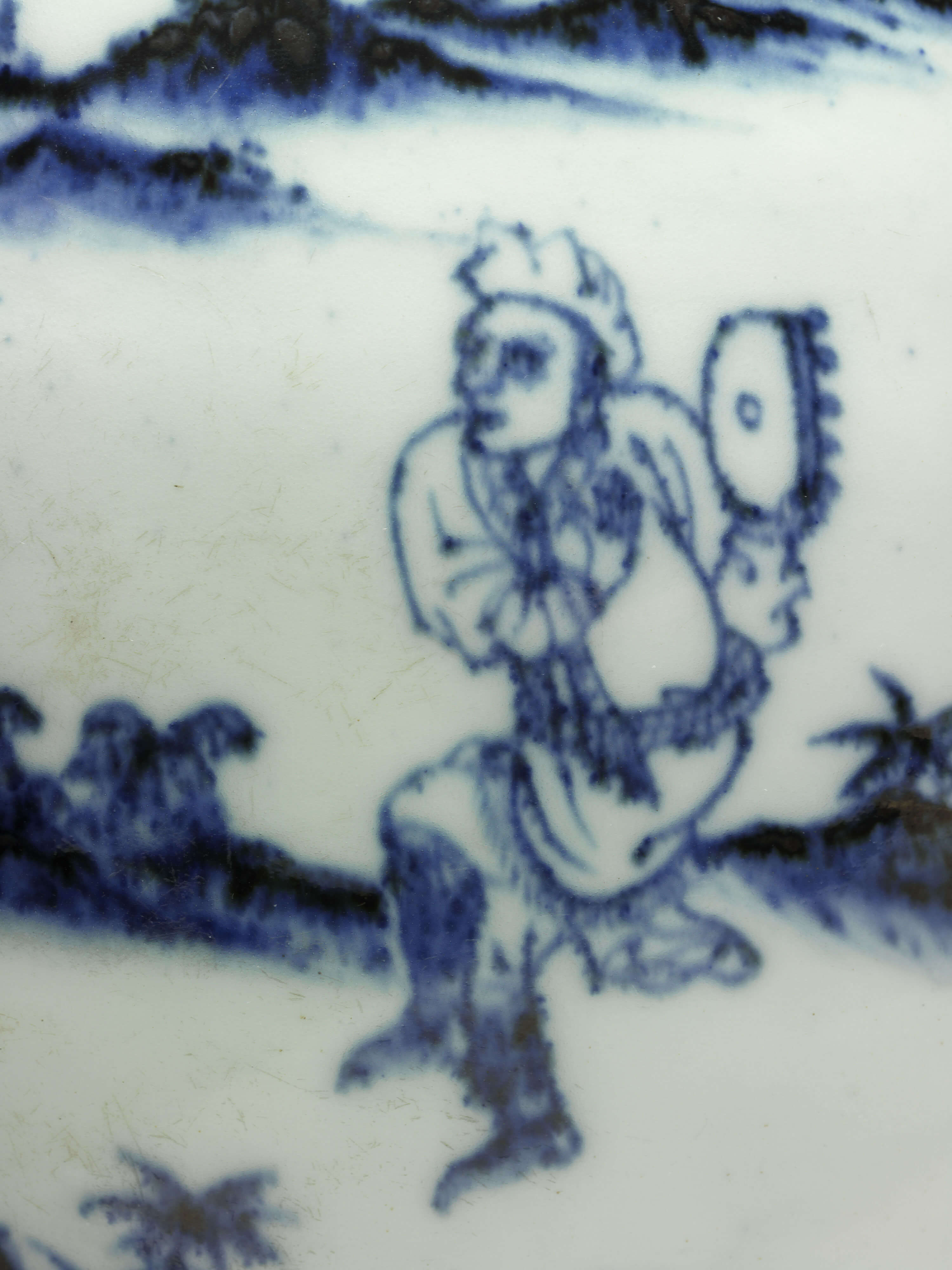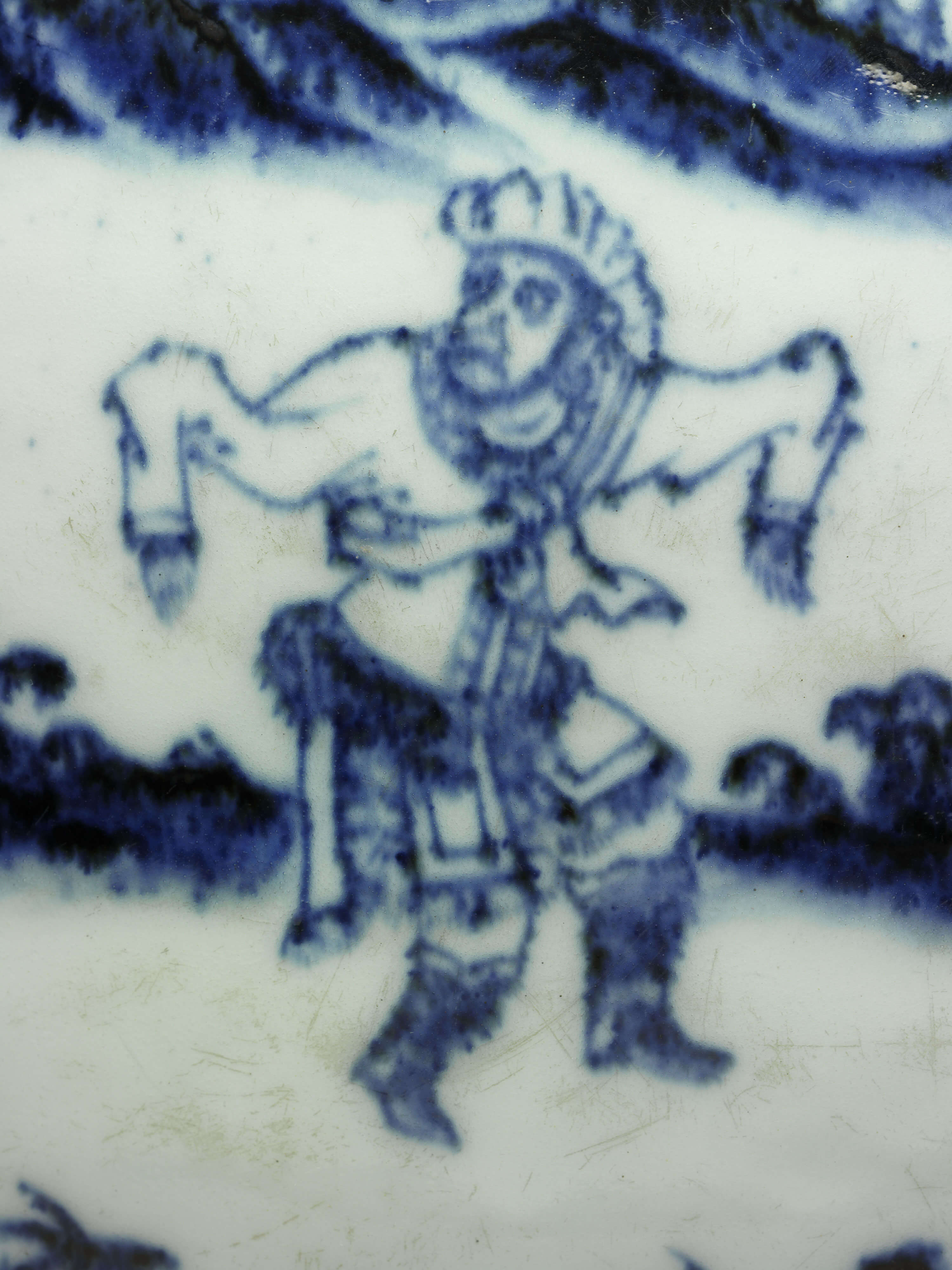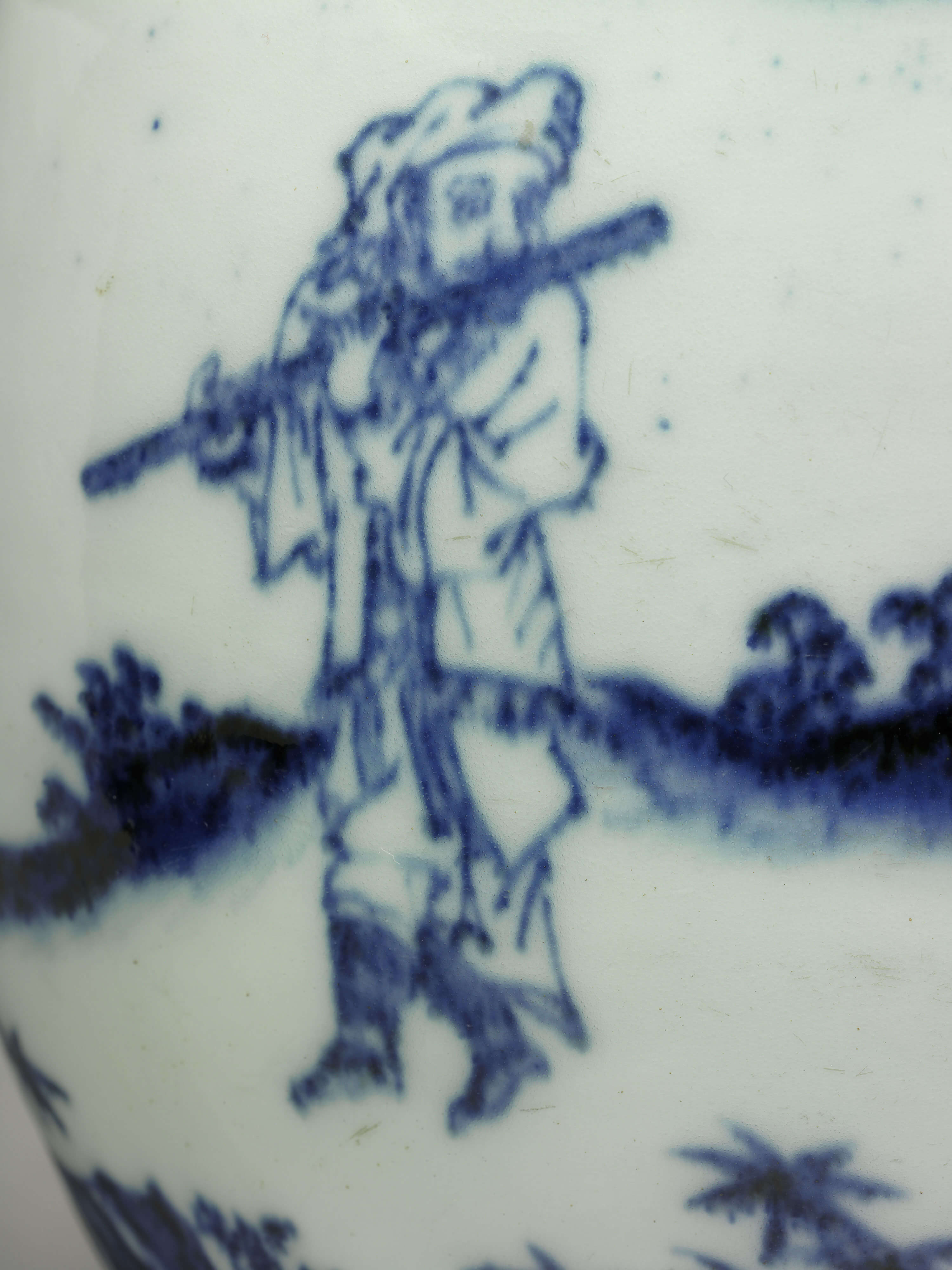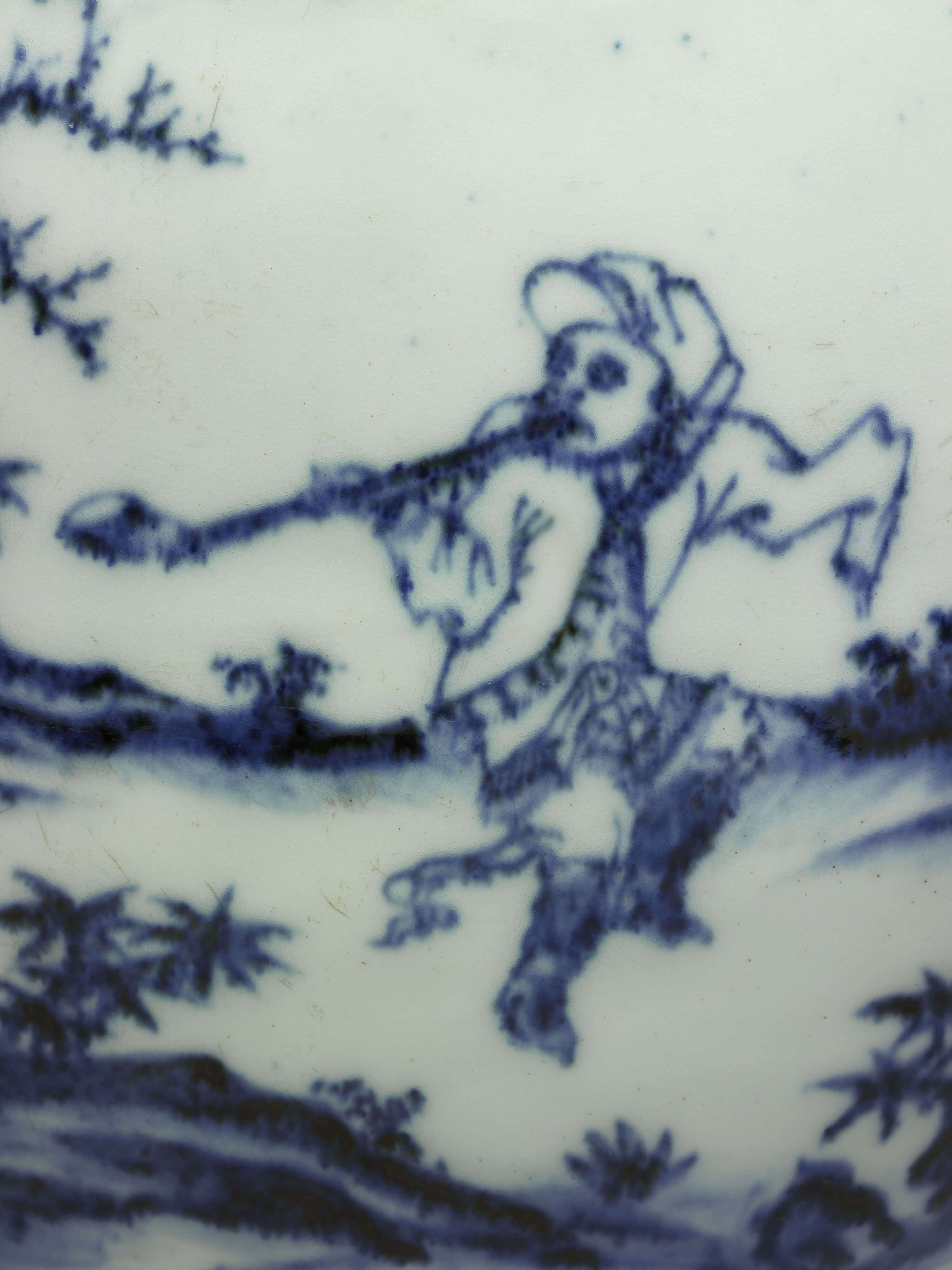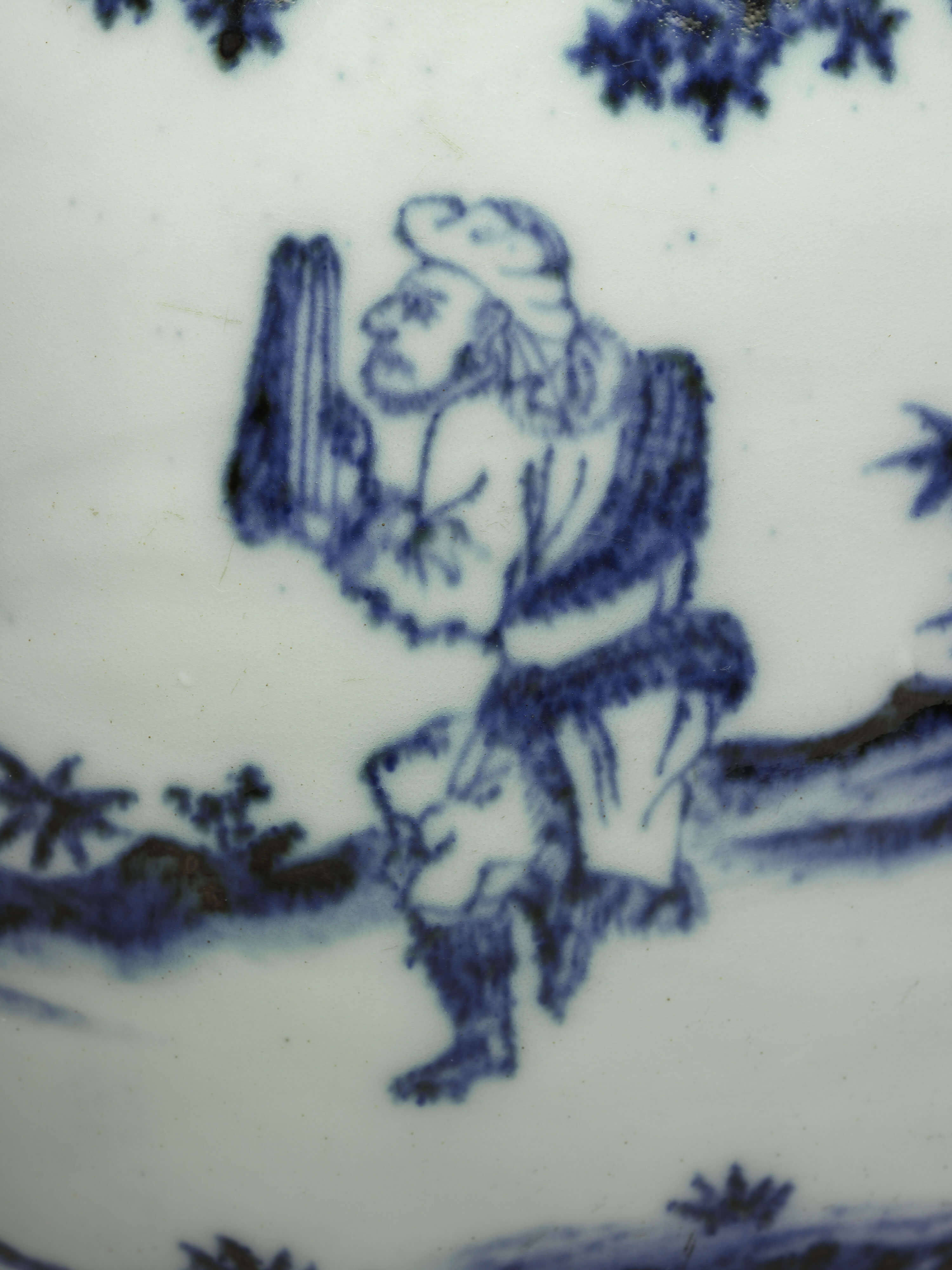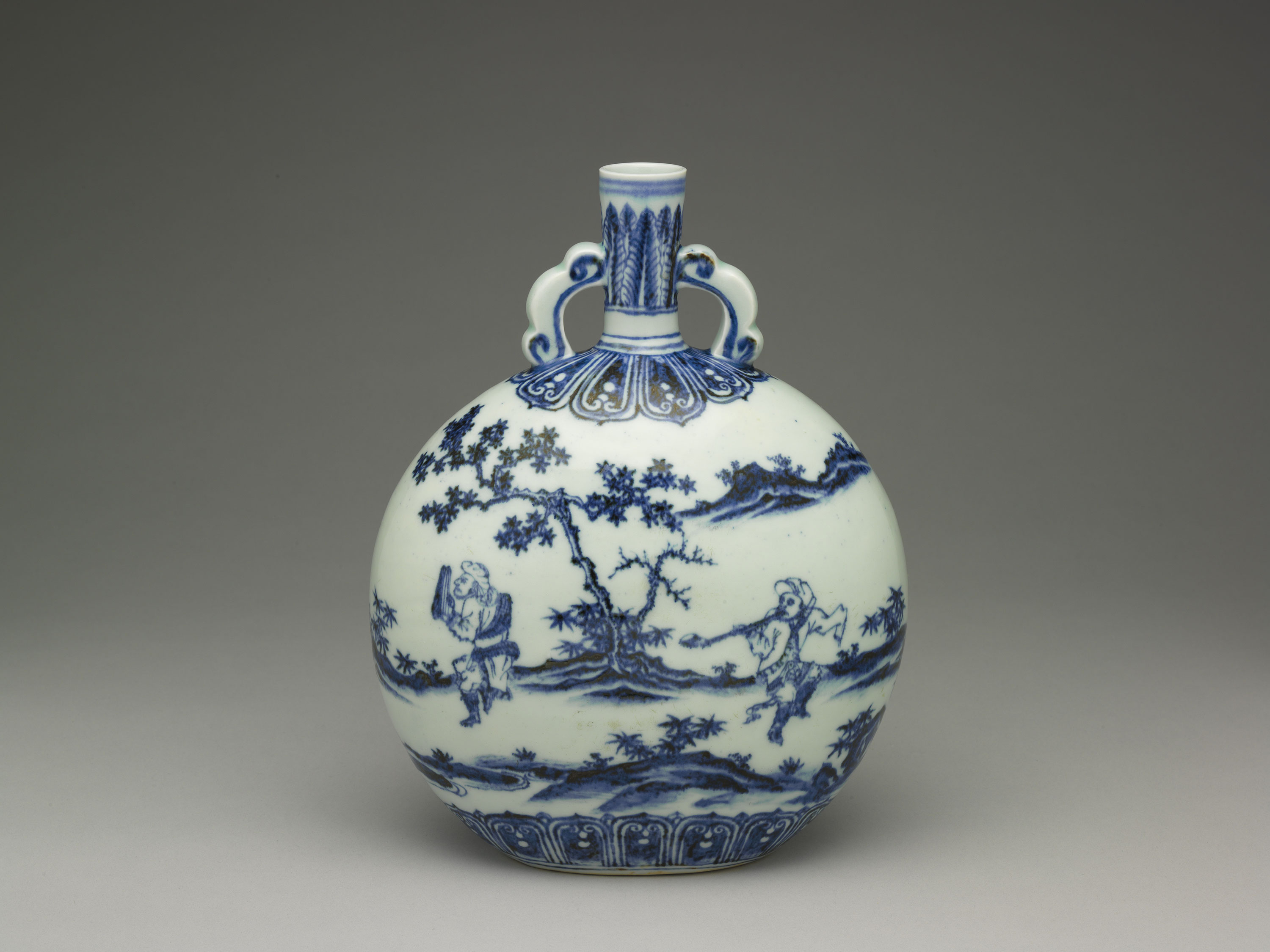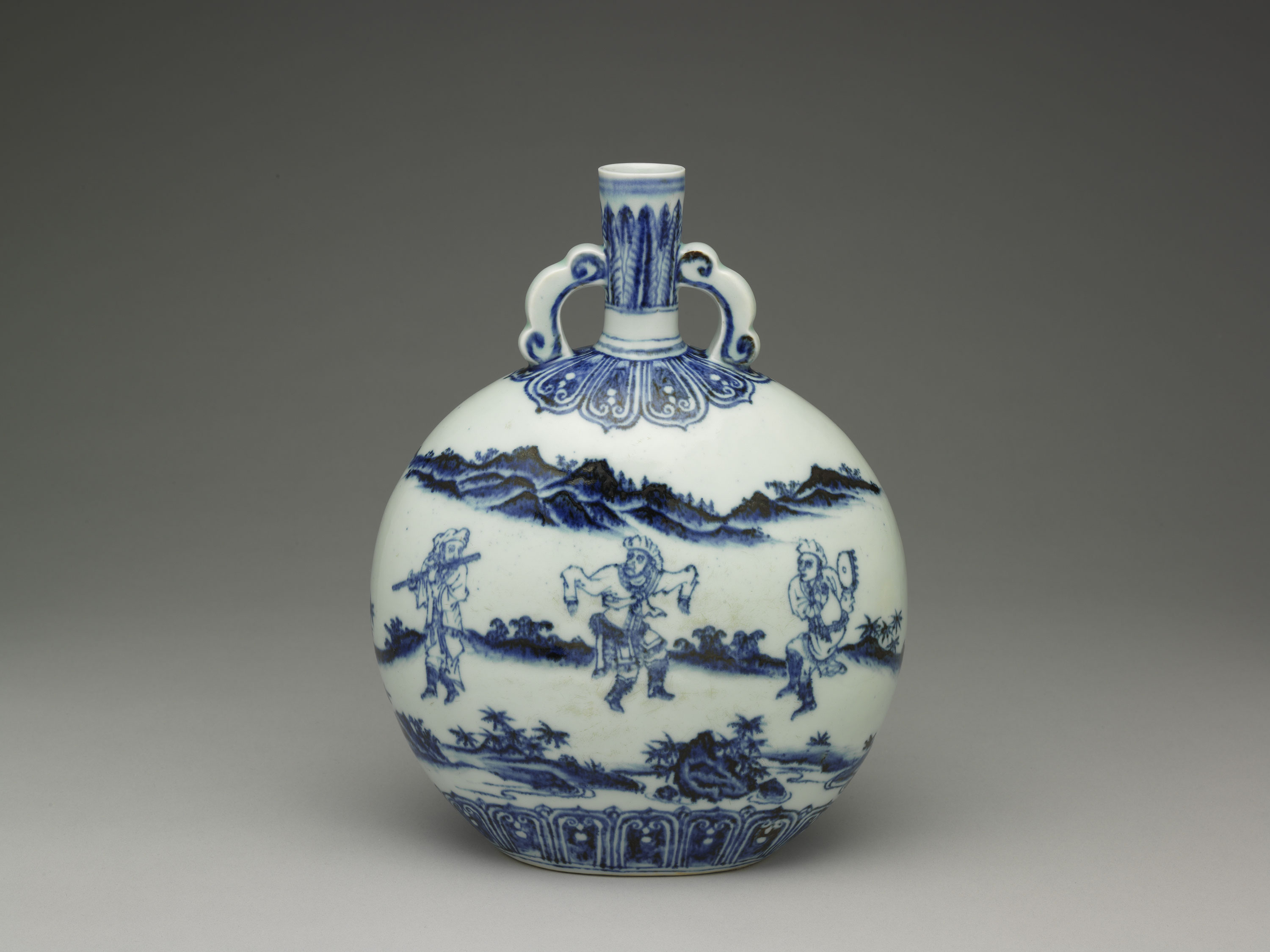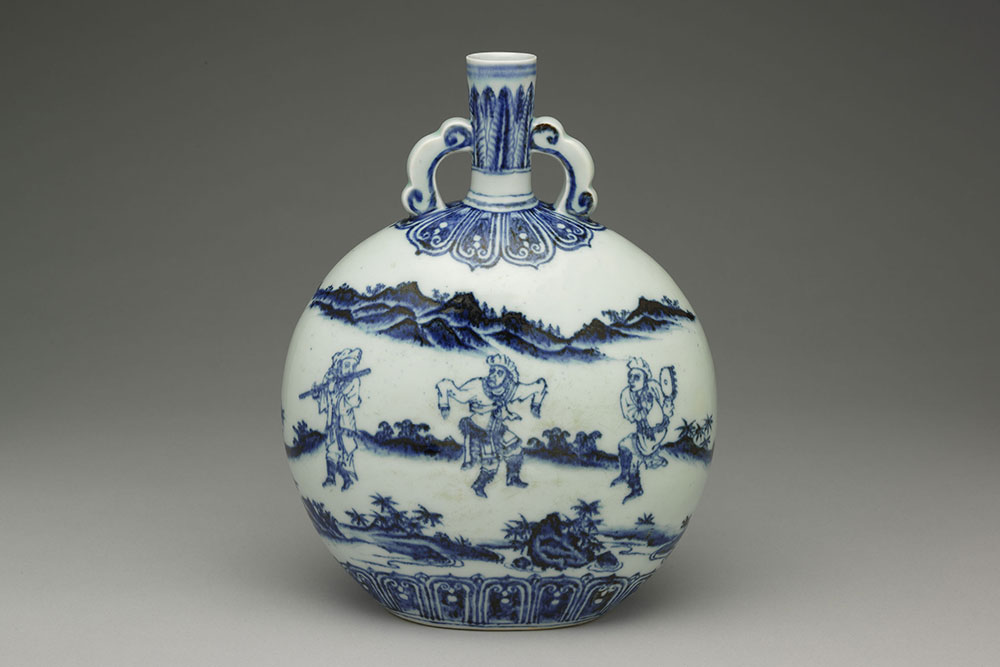Trend from the Horizon
The interaction between the Ming court and Islamic world in the 15th century resulted in the further blends shown in the visual and material culture. The imitation of appearance, spread of decoration, changes of size and development in glaze, all of them reflect the foreign influence and interactions.
- Vase with lotus and dragon patterns in underglaze blue
- Ming dynasty, Yongle reign (1403-1424)
A vase with long neck and globular body is known as celestial globe vase. This type of vase was created around 1425, was once sold to the Islamic world, and became part of the royal collections of Turkey and Iran.
- Lidded jar with leaf scrolls and diagonal check pattern in underglaze blue
- Ming dynasty, Xuande reign (1426-1435)
This shape shows the influnce from the metalwork of the Central and Western Asia. The blue dots along the rim present the decoration imitating the Islamic pottery during the Xuande period.
- Lamp with floral pattern in underglaze blue
- Ming dynasty, Xuande reign (1426-1435)
The lamp resembles the enchanted lamp of Alaeddin. Zheng He's fleets had visited several Islamic countries, and also thousands of pottery lamps were excavated in Fustat, Egypt. Therefore, this type of porcelain lamp with handle and saucer could be considered an outcome of the interaction between Central and Western Asia in the 15th century.
